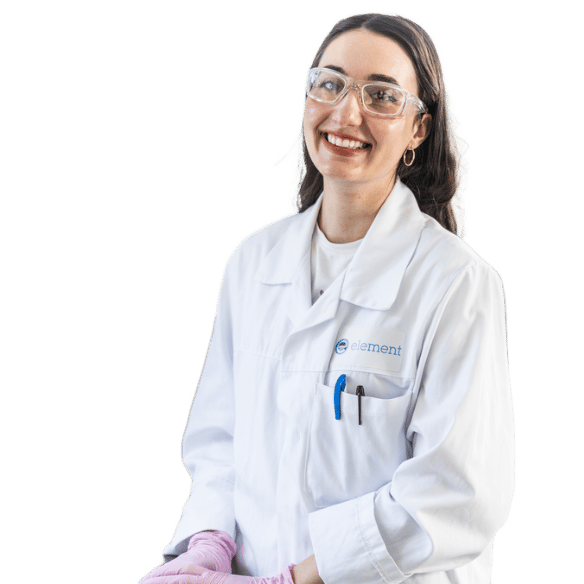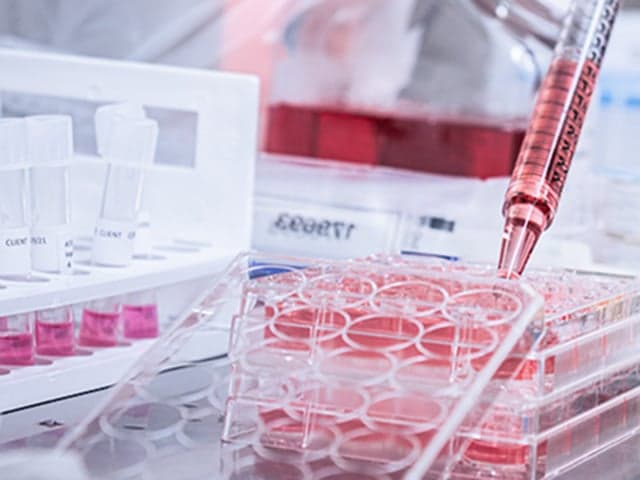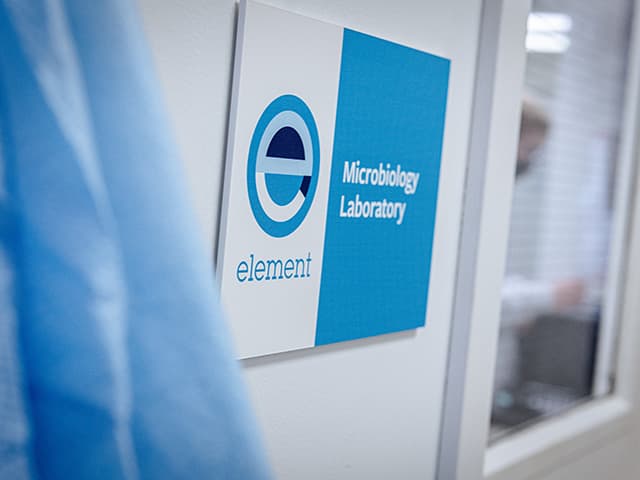Residual Bactericidal Efficacy Testing
Meet EPA requirements and validate your residual antimicrobial products with our decades of technical expertise. Our comprehensive residual bactericidal efficacy testing services help you demonstrate long-lasting antimicrobial effectiveness and achieve successful product registration. Get expert support for your surface coatings, fabrics, and sanitizing products through every stage of development.

What is Residual Bactericidal Efficacy Testing at Element?
Residual bactericidal efficacy testing evaluates how effectively antimicrobial products maintain their bacteria-killing properties over time. At Element, we provide comprehensive testing services to validate products that offer prolonged antimicrobial protection on surfaces between regular cleaning cycles.

What Can Element Offer You For Residual Bactericidal Efficacy Testing?
Key tests offered
Key tests offered
Elements' testing portfolio encompasses the full spectrum of residual bactericidal efficacy requirements. We deliver precise, reliable results through established methodologies while maintaining the flexibility to address unique product needs. Our comprehensive approach ensures your products meet all necessary regulatory standards for antimicrobial claims.
Testing services include:
- Residual Self-Sanitizing Efficacy Screen
- EPA Residual Self-Sanitizing Activity Testing
- Antimicrobial Surface Coatings Efficacy Testing
- Copper-Containing Surface Products Testing
- Ex-Vivo Skin Model Testing
- Laundry Additives Residual Testing
Materials and products we test
Materials and products we test
We specialize in testing diverse antimicrobial products designed for long-term effectiveness. Our comprehensive testing capabilities cover everything from industrial surface coatings to consumer laundry additives, ensuring accurate validation of your product's residual bactericidal properties. We understand the unique challenges of different material types and adapt our testing protocols accordingly. These products are particularly desired in areas like public transportation where surfaces are touched many times between cleaning and disinfection cycles.
Methods and solutions offered
Methods and solutions offered
Our advanced testing methodologies align perfectly with current EPA guidance while accommodating innovative product designs. We combine physical wear procedures, systematic inoculation protocols, and quantitative analysis to provide comprehensive validation of your product's long-term effectiveness. Our custom protocol development ensures your specific testing needs are met with precision.
Residual Self-Sanitizing Efficacy Screen
This test evaluates the self-sanitizing activity of antimicrobial products on hard, nonporous, non-food contact surfaces after exposure. The product may be sprayed or applied by other means as specified by the sponsor.
EPA Residual Self-Sanitizing Activity on Hard, Non-Porous Surfaces
Glass or stainless-steel surfaces are treated with the product and allowed to dry. These surfaces then undergo physical wear simulations and controlled microbial exposure to assess real-world contamination scenarios. To pass, the product must achieve a 99.9% reduction in bacteria within 24 hours. Common test organisms include Staphylococcus aureus and Klebsiella pneumoniae, with additional pathogens tested as needed.
Antimicrobial Surface Coatings Efficacy Test
This test supports the registration of antimicrobial coatings designed to provide long-lasting protection (weeks) as a supplement to standard disinfection. A treated surface is exposed to microbial contamination after chemical and physical stress. After a defined exposure time (≤2 hours), survivors are neutralized and assayed.
Copper-Containing Surface Products Bactericidal Activity Test
Designed for the registration of copper-based antimicrobial surfaces, this test evaluates long-lasting bacterial reduction. The surface undergoes chemical and physical wear before exposure to a microbial film. Survivors are then neutralized and analyzed.
Residual Efficacy Using an Ex-Vivo Skin Model
This method assesses the long-lasting antimicrobial activity of topical skin treatments using an ex-vivo skin model. Microorganisms are applied to treated substrates that mimic skin, then neutralized and assayed after exposure.
Residual Self-Sanitizing Activity of Laundry Additives
This test determines the residual antimicrobial activity of laundry additives on treated fabrics used in the final rinse cycle. Fabric swatches are exposed to microbes, then neutralized and analyzed to verify their residual sanitizing effects.
Which labs offer this service
Which labs offer this service
Element maintains a global network of laboratories and testing facilities, with Element Eagan serving as our flagship antimicrobial testing center. Our international presence ensures consistent, high-quality testing services wherever you operate. Each facility maintains GLP compliance and upholds our rigorous quality standards, offering you both local convenience and global expertise.
Standards we test to and materials we test
- EPA guidance for bactericidal claims on residual products
- Hard, non-porous surfaces
- Glass surfaces
- Stainless steel surfaces
- Copper-containing surfaces
- Fabric materials
- Ex-vivo skin models
- Non-food contact surfaces
Your Challenges, Our Solutions
Navigating complex EPA requirements
Proving sustained antimicrobial effectiveness
Developing appropriate test protocols
Validating between-cleaning performance
Why Choose Element

Industry leadership
Comprehensive support
Custom solutions
Quality assured

Explore our global network of labs and find your nearest location
VIEW ALL LOCATIONSRelated services

Antimicrobial Testing Services
Accelerate antimicrobial product approval with GLP-compliant testing for EPA, FDA, TGA & more. Element delivers trusted efficacy data to meet global regulations & prove effectiveness against emerging pathogens. Learn More.

Virology Testing
Element delivers GLP-compliant virology testing for antimicrobial products, helping companies meet global regulations, validate claims, and accelerate time to market with expert-led, reliable data.

Antimicrobial Microbiology Testing Services
Element's knowledgeable microbiologists can test to multiple established methods, as well as developing custom protocols.
